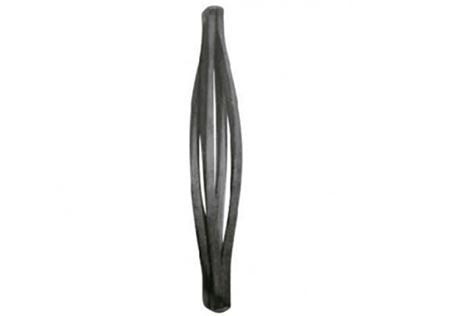What is the anatomy of wrought iron railing?
Views: 1074 Update date: Apr 10,2024
Wrought iron railings typically consist of several key components, designed both for structural support and aesthetic appeal. Here's a breakdown of the anatomy of a typical
wrought iron railing:
Balusters: Balusters are the vertical posts that support the handrail. They are usually evenly spaced along the length of the railing, providing stability and safety. Balusters can come in various designs, such as twisted, hammered, or plain, adding decorative elements to the railing.
Handrail: The handrail is the horizontal component that runs along the top of the balusters. It provides a gripping surface for users to hold onto as they ascend or descend stairs or walk along a pathway. Handrails can be simple or elaborately designed, depending on the style preferences.
Newel Posts: Newel posts are larger, more substantial posts located at the ends of a railing or at key junctions, such as where the railing changes direction or terminates. They provide additional support and serve as anchor points for the handrail and balusters. Newel posts are often more decorative than balusters and can feature intricate designs.

Base Rails: Some wrought iron railings feature a base rail, which runs along the bottom of the balusters. Base rails provide additional stability to the railing system and can also serve as a decorative element. However, not all wrought iron railings include a base rail.
Scrollwork and Decorative Elements: Wrought iron railings are known for their intricate scrollwork and decorative elements. These can include twists, curls, scrolls, and other ornate designs incorporated into the balusters, handrail, and newel posts. These decorative elements add visual interest and elegance to the railing.
Connectors and Fasteners: Various connectors and fasteners are used to assemble the different components of the
wrought iron railing securely. These may include screws, bolts, brackets, and welding for permanent installations.
Finish: The finish of the wrought iron railing is essential for both aesthetics and durability. Common finishes include paint, powder coating, or patina, which not only enhance the appearance of the railing but also protect it from corrosion and weathering.
Overall, wrought iron railings are crafted with attention to detail, combining both functional support and artistic design elements to create a visually stunning and sturdy railing system.
Prev News: Which is better wrought iron or steel?
Next News: What is the difference between wrought iron and ornamental fences?
